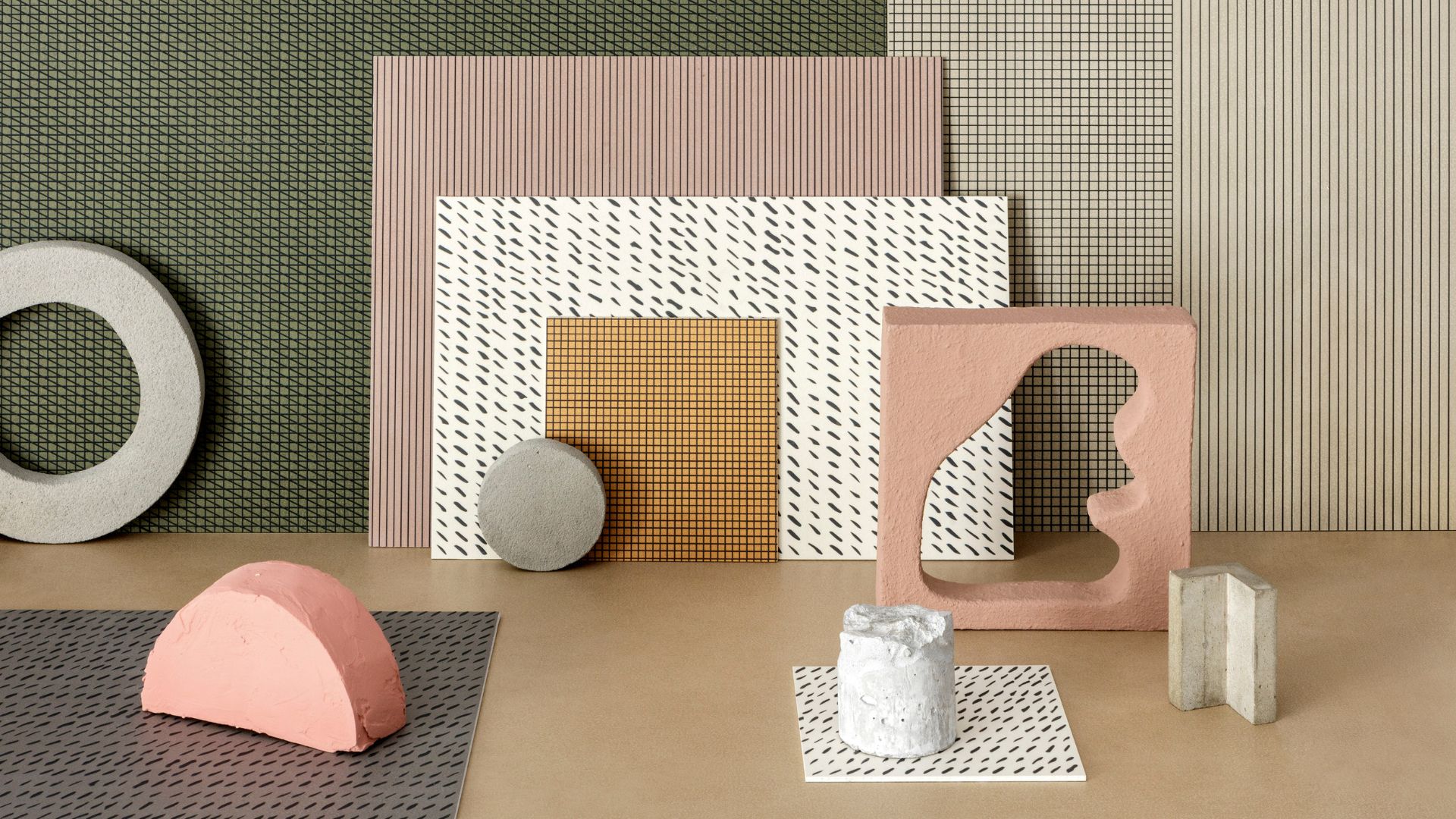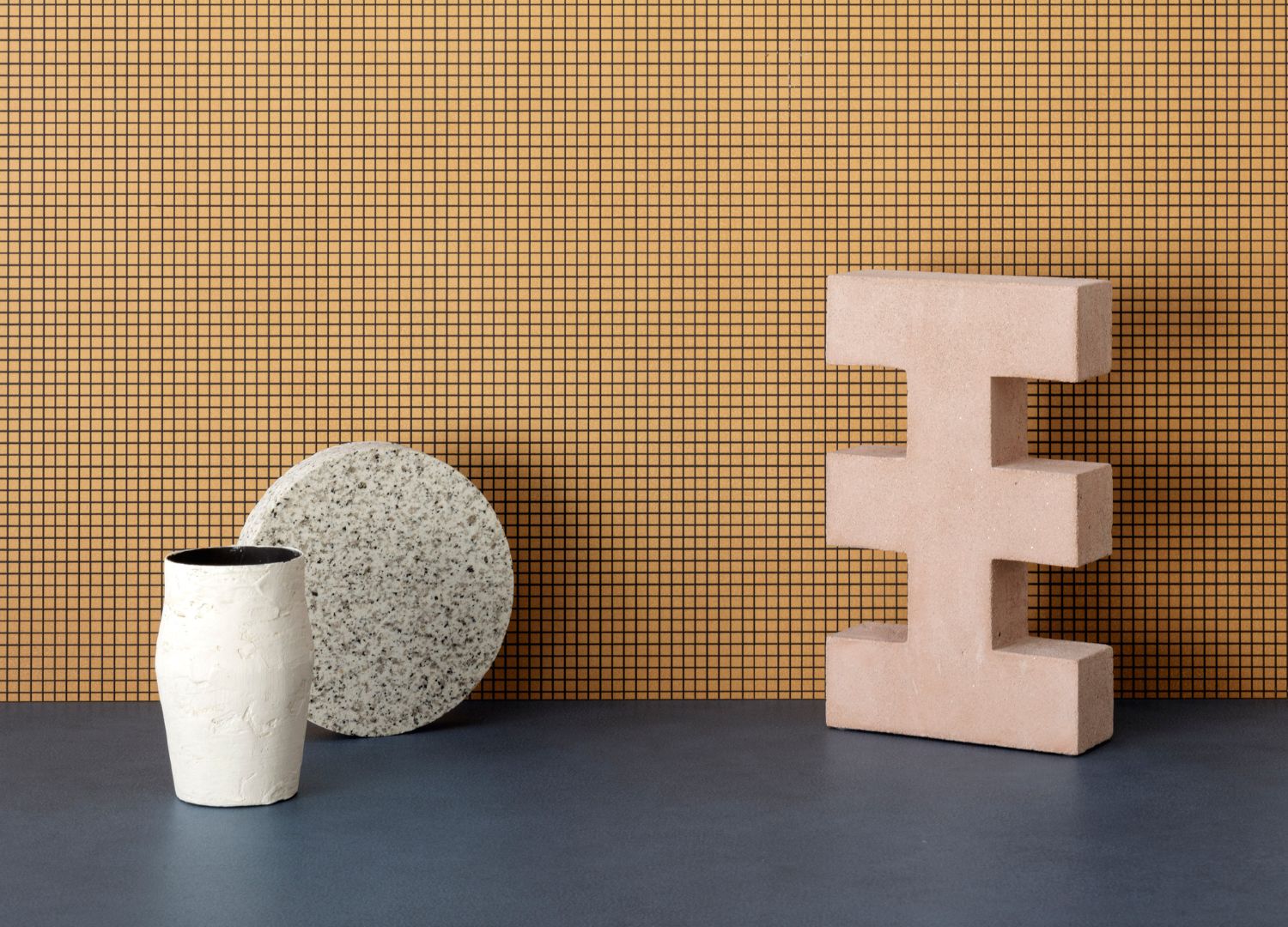The geometrical twist of Pigmenti – interview with Ferruccio Laviani
Lea Ceramiche and Ferruccio Laviani present Segni, five new patterns to be combined with the tactile and earthy surface of Pigmenti

Last year Lea Ceramiche and Ferruccio Laviani presented Pigmenti, a tactile and chromatically perfect collection inspired by the work of the artist Sol Lewitt.
An earthly surface which overpassed the limits of industrial production thanks to a technological innovation enabling it to reach a materic feeling along with a minimum thickness and a revolutionary dry laying system. This year Lea Ceramiche and Ferruccio Laviani worked together again to add a decorative continuum to Pigmenti. It is called Segni and Milan Design Week has been the ideal occasion to present it to the public.

Laviani imagined an impressive installation for the PAC (Contemporary Art Pavillon) courtyard in Milan. There, under the warm sun of the Milanese springtime, four macro sculptures reproducing the architects’ traditional tools, gave life to Tools & Space, an installation using Pigmenti and Segni as artistic skin.
We asked Ferruccio Laviani to tell us everything about it.
We talked about Pigmenti in September when it was presented. Now it is the time for Segni, an upgrade of the collection…
Ferruccio Laviani:
“Initially my research for Lea Ceramiche pursued two different directions. I focused on a new chromatic scale and an innovative tactile surface: Lea Ceramiche chose a contemporary palette based on 12 colors. I worked with the essential idea of ceramic, giving life to a concept based on a natural tactile feeling.

It involved a lot of technical and design research but finally, through trial and error, we reached an impressive result. Combining Pigmenti with the minimum thickness of Slimtech slabs, we obtained an innovative, sustainable surface with an original tactility and a new chromatic effect recalling the rough surface of the raw clay.
Segni is quite a different aesthetic operation: it has a geometrical twist…
Ferruccio Laviani:
“Segni is the continuation of this previous work. I wanted to give an ornamental content to the surface without betraying my keenness for monochromatic surfaces. So I went back to the experimentation of Italian Programmatic and Conceptual art. I mainly worked on the idea of lines and their rhythmic multiplications in grids.

I think that this geometrical intervention on Pigmenti enhances the tactile feeling and gives sense to a combination of contradictory juxtaposition. The result is freely interpretable as usual: it is an invitation to architects, designers and end users to compose the surface as they like, according to space.
Segni is also a way to enable a different perception of space. The decor underlines width and volume, giving shape to the different dimensions and directions of the horizontal and vertical surfaces.
Among the five variations of Segni, Goccio is the one that suggests manual interventions: just a sign of a brush forming a pattern. It is the ideal interruption of the grid-like pattern, an evasive element to be combined with the plain monochromatic surface or to break the rhythm of the geometric sequence.

Lea Ceramiche has been present in the Design Week circuit with your installation Tools & Spaces…
Ferruccio Laviani:
“The installation for the PAC courtyard was a celebration of obsolete architectural tools. I wanted to get back to the original part of architectural work, to have a chance to deal with memories. Everything seems to be very far away, but actually, it is not. Just a few years of separate technical hand drawing from 3D software.
Working on dimensions and out of range upsizing brings attention to another level while stimulating ancient memories and giving us a chance to recall how changed our way of designing buildings and objects.

The reference to surrealism is evident: I wanted to transform the courtyard of a contemporary art pavilion into a space dedicated to something being part of a very recent history that managed to disappear completely from our daily lives. I think that placing the installation between the Modernist Ignazio Gardella’s PAC and the Neoclassical Villa Reale adds sense to the whole operation”.

















